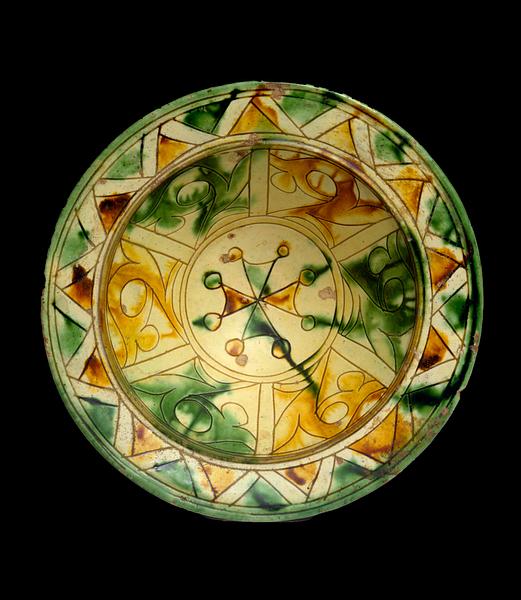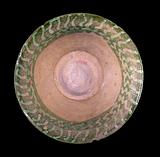Earthenware bowl, covered with a white slip, incised, and painted in yellowish brown and green in a transparent glaze. Sgraffito type
Syria, Palestine, or Jazira; 13th century
H: 8.5; Diam: 25.8 cm
Bowls of this type have been excavated in the eastern Mediterranean region, which was dominated in the 12th and 13th century by Christian crusaders and the Kingdom of Armenia, and this is probably where they were produced. The type has been called “Port St. Symeon ware” after a Frankish port west of Antioch.
The sgraffito technique has been known since the 9th century and was used in the Middle Ages in both Islamic and Christian lands. In this bowl, the two cultures were further combined, since it was embellished with a cross as well as six Kufi-like palmette decorations, which have been read as laka (“for you”).
Inv. no. 1/1996
Published in:
Kjeld von Folsach: Art from the World of Islam in The David Collection, Copenhagen 2001, cat.no. 190;
Alfried Wieczorek, Mamoun Fansa, Harald Meller (eds.): Saladin und die Kreuzfahrer, Landesmuseum für Vorgeschichte, Halle, Mainz 2005, cat.no. D. 38, p. 451;
Institute of Ismaili Studies: Encounters in Muslim History, Student reader 1, London 2017, p. 160;
John A. Burrison: Global clay: themes in world ceramic traditions, Bloomington 2017, fig. 3.16, pp. 80 and 83;


